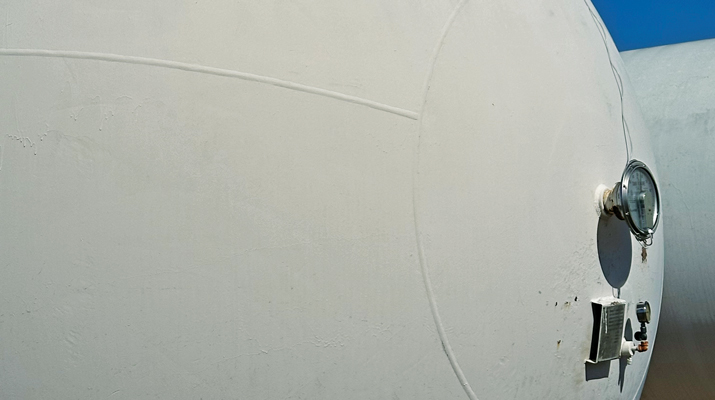Milder winter stalls early propane sales for many retailers
 A number of meteorologists predicted a milder winter for 2015-16, with a strong El Niño pattern serving as a forecast driver.
A number of meteorologists predicted a milder winter for 2015-16, with a strong El Niño pattern serving as a forecast driver.
Unfortunately for much of the propane industry, those forecasts were largely accurate through the first weeks of the winter heating season. Warmer-than-normal temperatures were anticipated in the northern United States, colder-than-normal temperatures were anticipated for the southern U.S., and higher-than-average precipitation was the expectation in the West.
Those regions have largely gotten just that thus far.
“Meteorologists were right in predicting about El Niño,” says Dan Binning, Kiva Energy‘s Rocky Mountain territory manager. “California is getting plenty of moisture; it’s colder than normal in the South, and that’s even extending into the Southeast; and it’s much warmer than normal in the eastern two-thirds of the country.”
Propane retailers have felt the ill effects of warmer temps across the Midwest.
“Judging by the reduced demand we’ve observed thus far, the warmer weather has impacted our sales volume,” says Jon Ihler, vice president of sales and marketing at Missouri-based MFA Oil. “If the current trend of warmer weather persists, we estimate it could affect our sales by 30 to 35 percent.”
Matt Parsch, general manager of operations at Al Parsch Oil & Propane in Imlay City, Mich., offers a similar report from his company.
“So far this winter our propane sales are down 44 percent,” Parsch says, “with just over half of that due to the weather and the other half due to a slower-than-normal crop drying season.”
Burkardt’s LP Gas in Polo, Ill., felt the impact of the crop drying season, as well. A warm winter wasn’t the outcome owner Bev Burkardt envisioned three weeks into December following a poor crop drying season.
“I would imagine crop drying was down at least 500,000 gallons for us,” Burkardt says in a mid-December interview. “Now, look how warm it is for home heating. I would like it just normal, at freezing and a little below.”
Warmer temperatures have impacted those in the Northeast, as well.
“We’re not happy about the winter but it’s not something we control,” says Hillel Weisel, vice president of Connecticut-based Inland Fuel Terminals. “We were well-prepared on both our propane and oil side to handle a very big winter. It just isn’t materializing.”
According to a Dec. 21 update the National Oceanic and Atmospheric Administration (NOAA) provided, El Niño conditions are still present and the El Niño is expected to remain strong through winter. The Deep South stands the best chance to experience colder-than-normal temperatures during the first quarter of 2016, NOAA reports. Warmer-than-normal temps will be felt across a large strip of the western and northern U.S. stretching from California and the Pacific Northwest to the East Coast.
Considering the forecast ahead, retailers are preparing to cut costs as needed.
“I’m a facilitator for one of (the National Propane Gas Association’s) Benchmarking [Council] groups,” Binning says, “and most of the [retailers] in my group are in the eastern third of the country who are all experiencing warmer-than-normal temps. A couple are already putting in expense controls to make sure they get through the winter. They’re cutting back on overtime, travel and entertainment expenses. Overtime is probably the big thing they can save on.”
The start of the propane heating season hasn’t been poor everywhere, though. Suppliers and retailers in the Rocky Mountain region were off to a good start, Binning says.
“Basically from Colorado westward it’s been about average with some little blasts of cold,” he says. “The western third of the country has been experiencing more-normal temperatures by and large. It’s been day and night from last year to this year. Last year started out cold in the fall and by December that stopped and it never got cold again in Colorado, Wyoming, western Nebraska and western Kansas.”
The warmer weather could prompt retailers to further explore demand opportunities that aren’t tied to heating, Binning adds.
“It does reinforce the theory that we need to get our year-round, non-seasonal demand up with autogas, irrigation engines and other technologies,” he says. “It’s a double-edged sword having a heat-dependent industry.”
Regardless, retailers are hopeful they’ll make up for some lost sales early in 2016.
“There’s no doubt our sales will be down from the last couple of years, but there is a lot of winter left and plenty of time for our numbers to get back in to the normal range,” Parsch says.
Natalya Zaytseva, director of marketing at Crystal Flash in Grand Rapids, Mich., agrees winter has only just begun.
“While forecasters are predicting a milder winter, it’s Michigan – and that means anything can happen,” Zaytseva says. “We have been extremely proactive in pushing the message of winter preparedness to keep heating needs top of mind with our current and future customers. When the snow hits, as it most likely will, we will be ready to keep our customer’s propane tanks full.”
















